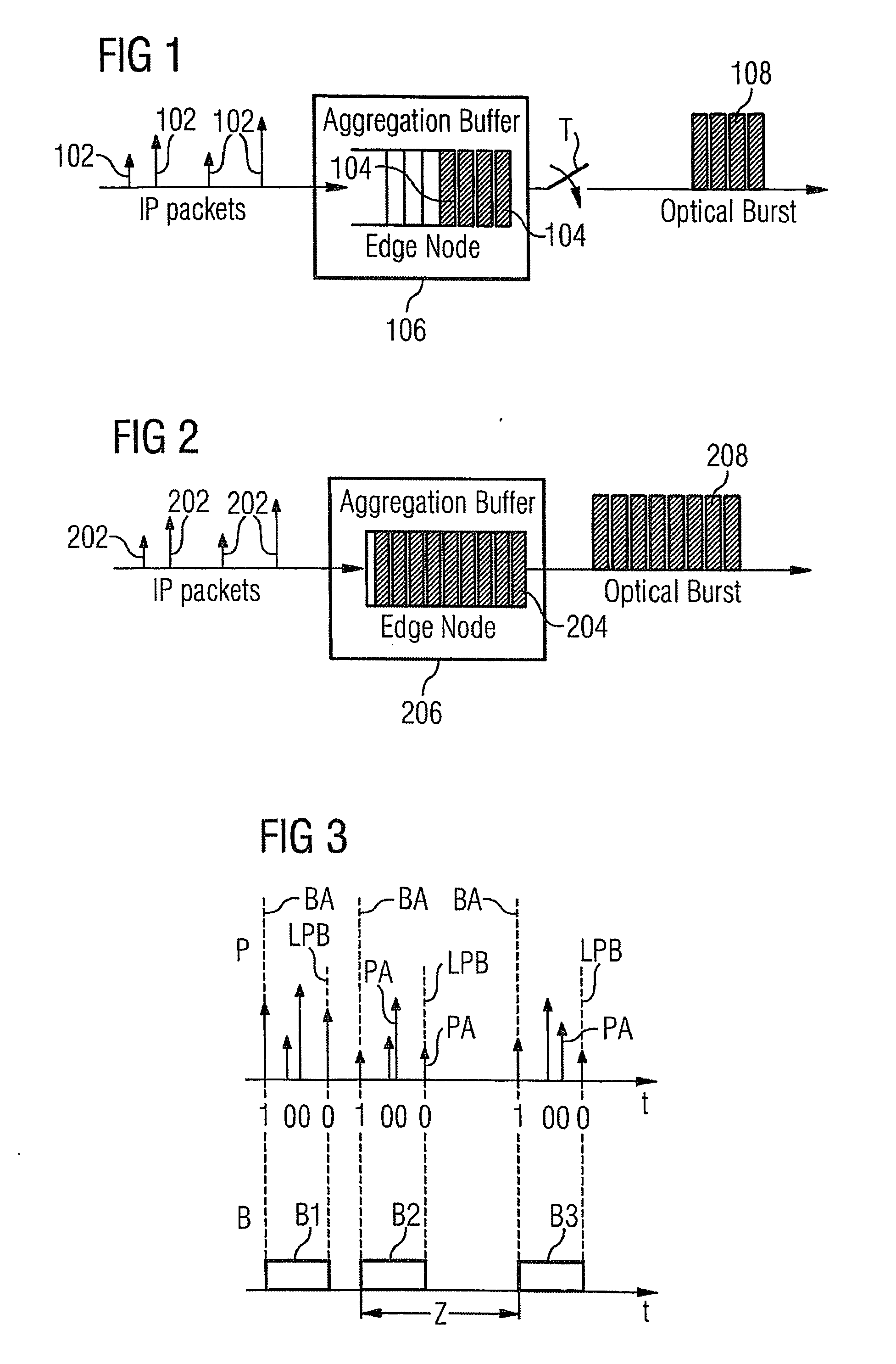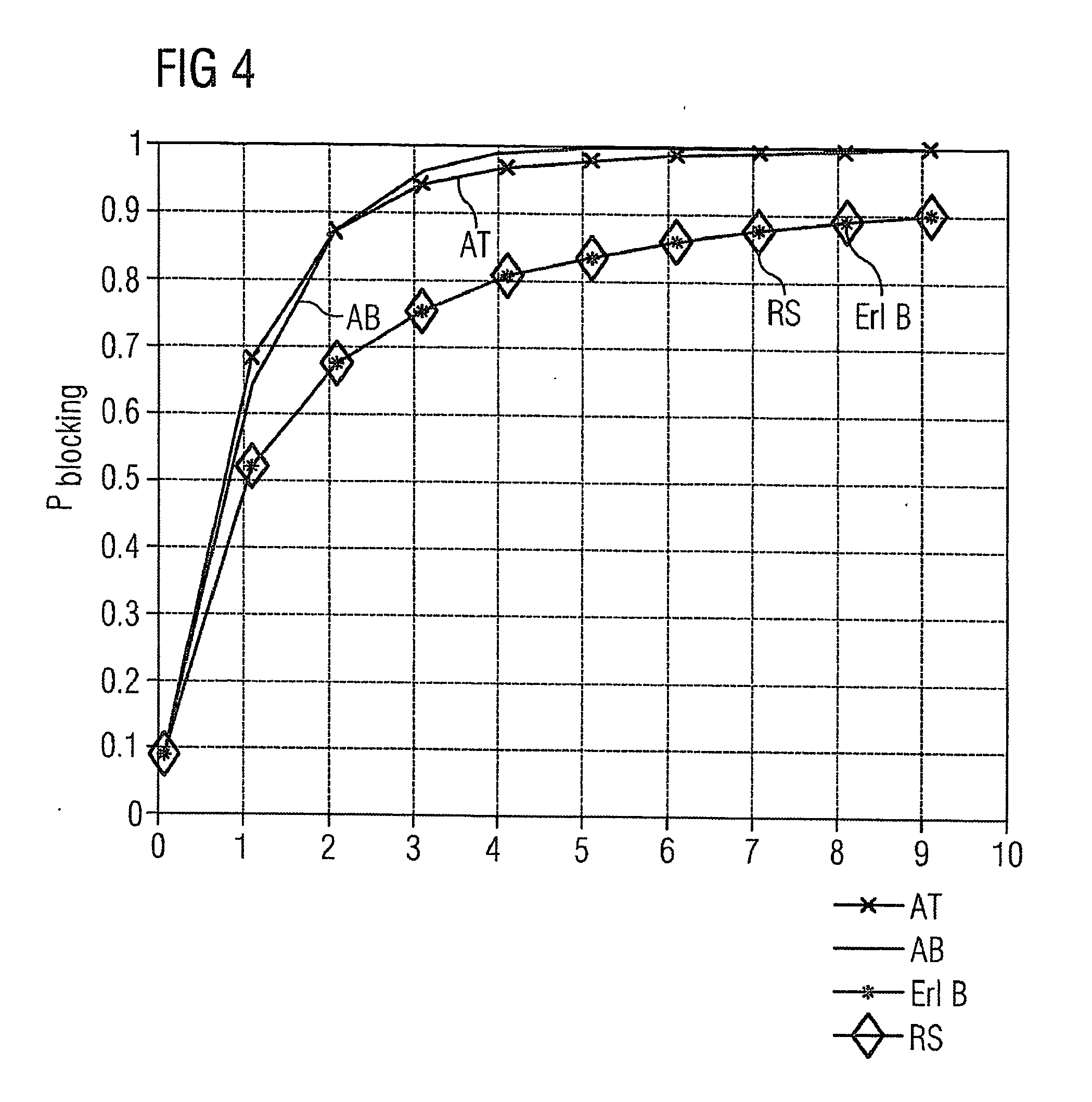Method for and apparatus for aggregating incoming packets into optical for an optical burst switched network
a switched network and optical technology, applied in the direction of data switching, electrical equipment, transmission, etc., can solve the problems of reducing the maximum achievable throughput and the disadvantage of a certain blocking probability, and achieve the effect of reducing the waiting time for bursts
- Summary
- Abstract
- Description
- Claims
- Application Information
AI Technical Summary
Benefits of technology
Problems solved by technology
Method used
Image
Examples
Embodiment Construction
[0026]FIG. 3 shows two associated timelines P and B. On the first timeline P packets PA, pictured as arrow line, are received in chronological order, e.g. IP packets, ATM cells or PDUs. Every packet is associated with a generated random binary digit. A binary digit has a first and a second value, e.g. 1 for the first value and 0 for the second value or opposite. So, every packet is associated either with a 1 or a 0. The random binary digits can be generated by a Bernoulli random generator, according to a Bernoulli probability distribution. The probability for every value of the random binary digit, thus the probability (p) for the 1's and (1−p) for the 0's, is determined by a certain probability distribution, e.g. p(1)=0.01 and p(0)=0.99. These packets are aggregated in a buffer to accumulate an optical burst. A packet with an associated first value, e.g. with a 1 indicates a transition between optical bursts, e.g. the beginning of a new burst. In FIG. 3 this is labeled with BA. The...
PUM
 Login to View More
Login to View More Abstract
Description
Claims
Application Information
 Login to View More
Login to View More - R&D
- Intellectual Property
- Life Sciences
- Materials
- Tech Scout
- Unparalleled Data Quality
- Higher Quality Content
- 60% Fewer Hallucinations
Browse by: Latest US Patents, China's latest patents, Technical Efficacy Thesaurus, Application Domain, Technology Topic, Popular Technical Reports.
© 2025 PatSnap. All rights reserved.Legal|Privacy policy|Modern Slavery Act Transparency Statement|Sitemap|About US| Contact US: help@patsnap.com



